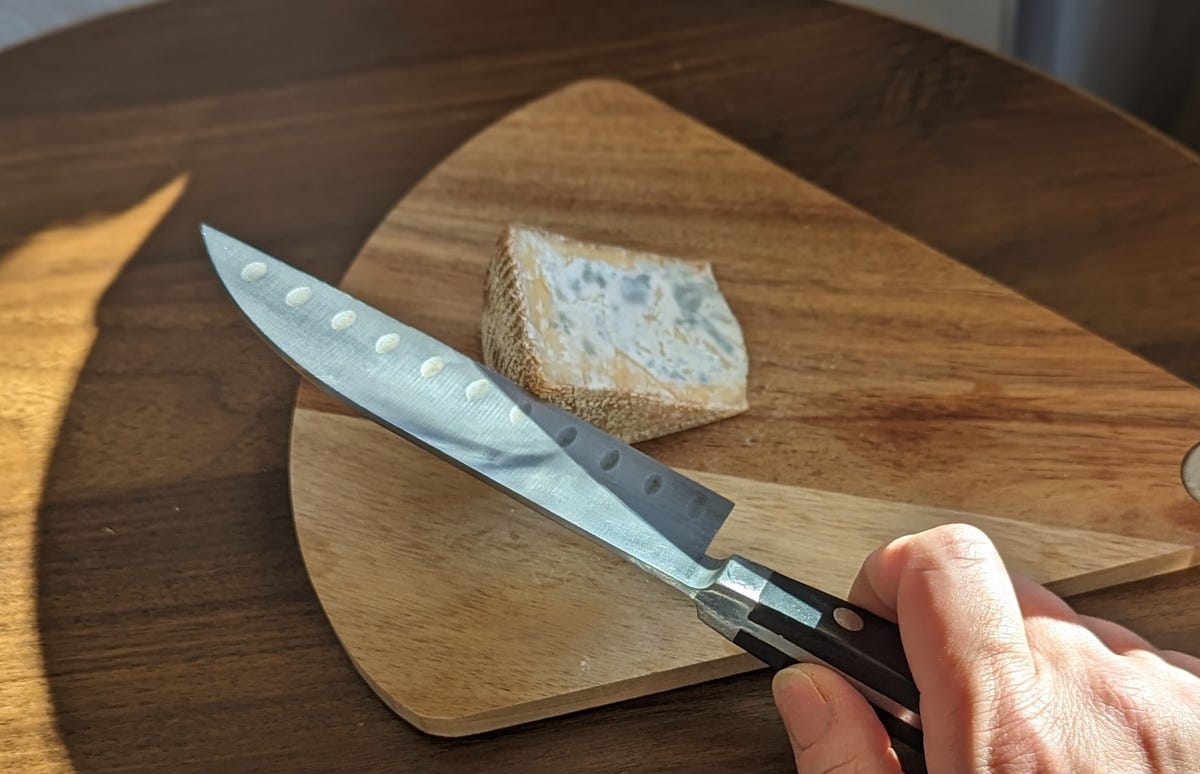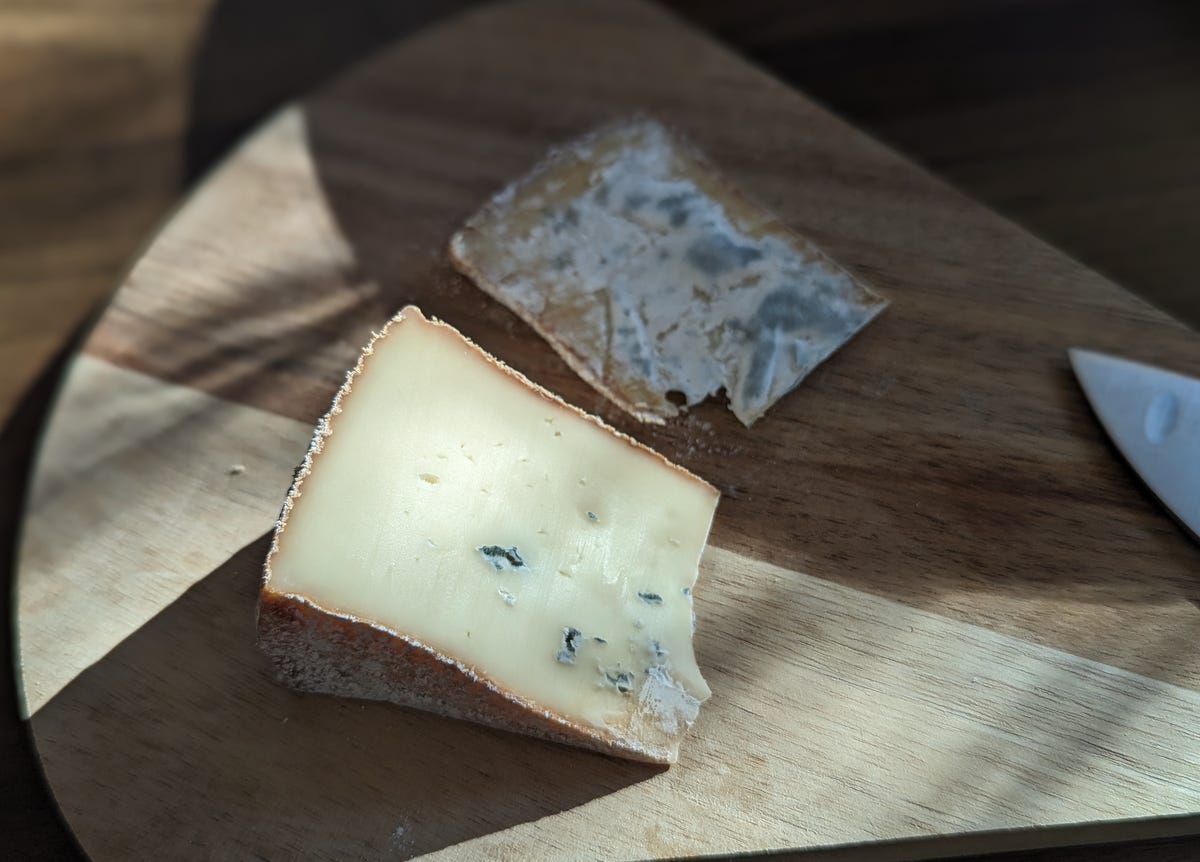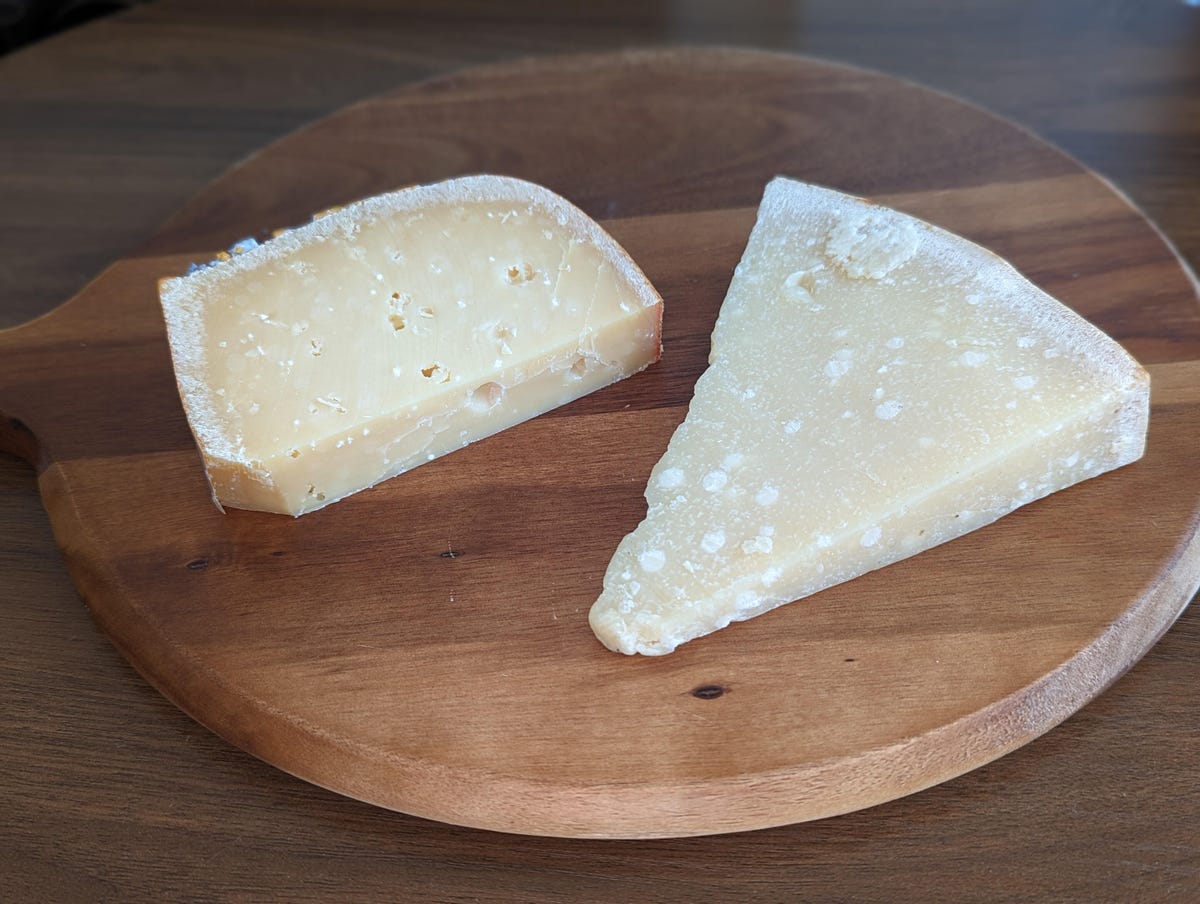The short answer to when you should throw out that moldy cheese is: Maybe never, depending on the type of cheese and degree of mold — but of course it’s not quite as simple as that. Here’s something that most people don’t like to hear when it comes to one of our favorite food products, but I promise it will save you from the heartbreak of thinking you have to discard perfectly good cheese: “Even though we’ve been taught to fear mold, all of cheese is mold,” says Anne-Marie Pietersma, a certified cheese professional, educator and writer.
All cheese is mold. Let that sink in a moment. While certain cheeses — looking at you, blue — sport their mold more proudly than others, cheesemaking is a process that encourages the growth of particular types of microorganisms, including mold. The bright white rinds of brie and camembert are mold. The mottled exteriors of aged English cheddars and alpine-style cheeses include mold. The sticky orange outside of delightfully dank washed-rind cheeses is a form of mold.
Read more: Here’s How You Should Store Your Cheese
But this is good news when you think about it. “Just the fact that cheese is already a preserved product, we don’t have to worry about a lot of the things that we do with other foods,” says Pietersma. “The biggest mistake I see people make is to think that cheese is something porous like bread and that you have to throw it away when it starts growing mold.” In addition to its generally low moisture content, cheese is also high in other elements that help prevent spoilage, such as salt and acid. While black mold might be evidence of something more sinister lurking in your fridge, for the most part, mold isn’t a great concern when it comes to cheese.
Of course, there are exceptions and variations to this rule, so here we delineate different types of cheese, in order of their degree of delicateness, and what to fear and not fear if they start to grow mold. And for more smarts to help feed your addiction, here’s how to properly store cheese and how to find the best cheese for cheap.
Fresh cheese: Probably discard
<figure uuid="387b9650-b70d-404c-9d0a-7ed2e2be7598" size="large" float="none" image-caption="
Fresh cheeses like chèvre, feta, mozzarella and ricotta have a far shorter shelf life than their aged counterparts.
” image-credit=”Pamela Vachon/CNET” image-alt-text=”fresh cheese in bowls” image-filename=”fresh-cheese.jpg” image-date-created=”2024/02/22″ image-width=”4080″ image-height=”3072″ image-do-not-crop=”false” image-do-not-resize=”false” image-watermark=”false” lightbox=”false” edition=”us” class=”c-shortcodeImage u-clearfix c-shortcodeImage-large c-shortcodeImage-hasCaption”>





